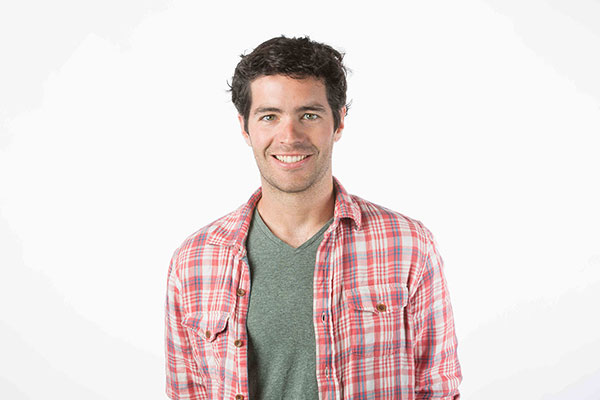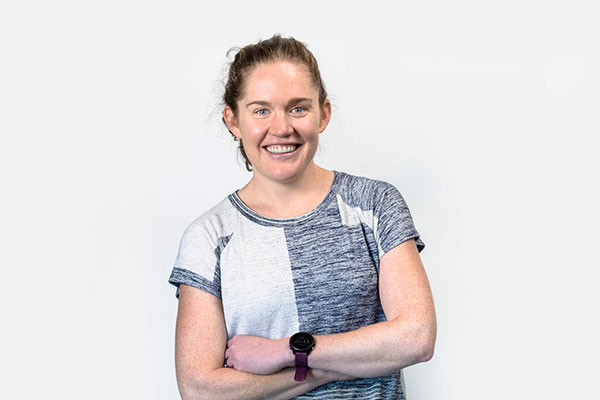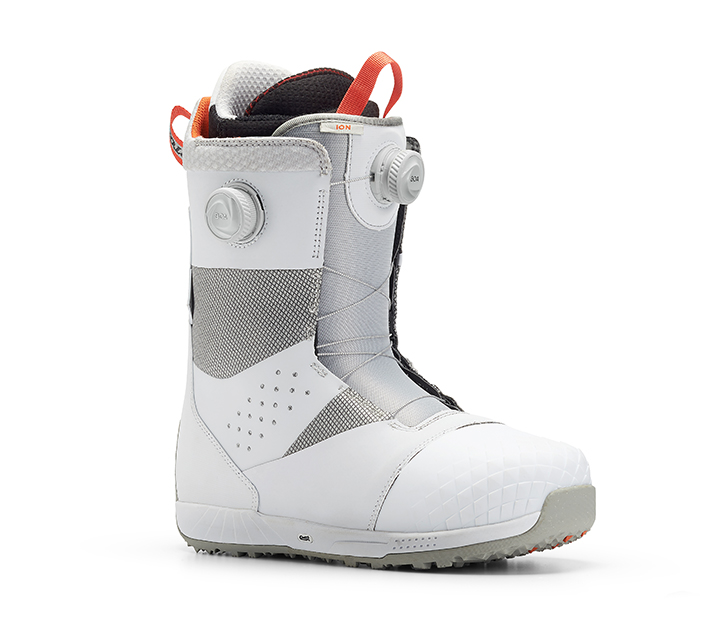HOW FIT IMPACTS SNOWBOARDING
BY  DAN FEENEY
DAN FEENEY  KATE HARRISON
KATE HARRISON
Follow on ![]() @Dfeeney31 and @running_geek
@Dfeeney31 and @running_geek

Does the fit of your snowboard boots affect your riding? While we at BOA are a bit biased, the fit of snowboarding boots may be your most crucial gear decision to ensure you have a great day on the mountain. Whether you want to rip some groomers or find pow stashes, you can’t second guess your movements while riding.
QUICK TAKES
- Landings from snowboard jumps lead to forces up to 4x your body weight and ankle movements that approach our body’s limits.
- Snowboarding boots need to be stiff enough to provide ankle support without being too stiff to cause knee or hip pain.
- Getting equipment tailored to you may reduce your risk of injury 8-fold!

Dan’s Take
Snowboard boot fitting is a blend of art and science. These boots combine style and function; the right boots let you to ride hard all day and cruise around town afterwards enjoying some après time. While the entire body is involved in making turns, up to 28% of snowboard injuries occur at the ankles, which isn’t all that surprising when you consider that all of the power being transferred from edge to edge must go through the foot and ankle via the boots. A solid base of support helps the ankles absorb impact, while still allowing freedom in other parts of the boot to enable proper circulation. If your boots don’t fit, you are missing out on low-hanging fruit for better riding.

Kate’s Take
As an athlete, snowboarding is a blast – an outdoor adventure that can be as exhilarating as you are up for that day. As a researcher – snowboarding is a unique challenge. It’s nearly impossible to recreate the slopes in the lab! While we can’t bring snow into the lab, we can take the lab onto the slopes. Snowboarders intuitively know what they need in a boot – something that will provide a seamless connection between their feet, the board, and the snow, while providing the support to tackle whatever terrain they choose. Our job is to look at these qualities in a quantifiable, granular way to make sure we deliver performance a snowboarder can trust in any conditions.

BOA’s Take
In 2001, BOA was born in Steamboat Springs, CO in the heart of the Rocky Mountains, where we revolutionized the fit of snowboard boots. We have spent countless hours over the past 19 years optimizing boot fit. The micro adjustability of the BOA Fit System allows riders to dial in to their perfect fit, while independently controlled upper and lower boot zones allow for a customized fit that locks in the heel. Ripping groomers requires a different fit profile than carving through the trees or buttering around the park. This means that snowboard boots shouldn’t be overly stiff, but they also can’t be pillow soft, so adding structure in the right areas is key to creating the perfect hybrid. We are planning our first biomechanical studies on fit and snowboard boots this winter (2020/2021) where we will use pressure-measuring insoles (see below), inertial measurement units (IMUs), and GPS to understand how boots impact riding over the course of a long day to keep us innovating and at the forefront of fit.

By using pressure-measuring insoles, we quantify how different fit solutions affect how athletes make turns. For example, the boot on the right (above) shows greater pressure in the lateral midfoot of the back foot during a turn. While this difference seems subtle, small pressure changes make a big difference over the course of a full day on the mountain. We combine pressure data with how smooth and quickly the turns were made (from our inertial measurement units) to characterize what pressure profiles are associated with more efficient riding.
Research on the topic
Snowboarding biomechanics are a fascinating but challenging area to study: we can’t install force plates under the snow (for a variety of reasons, the least of which is warranty on those plates), and it is a challenge to accurately collect how your limbs are moving in space while you cruise down the mountain. As a result, the biomechanics community is early in its journey of understanding snowboarding. For this discussion, we will focus on two key aspects of what we know to date: injury risk and performance.
While most reported snowboard injuries occur as a result of falls, high-level riders report injuries in their ankles, knees, and hips due to repeated hard landings and turns. Snowboarders are known to be at high risk for lateral ankle sprains, and even fracturing their talus (don’t worry, that link is academic and- at most- PG-13 rated)! Fracturing one of your main ankle bones isn’t surprising when you consider that a snowboard landing off a small jump results in peak forces of four times your body weight on the back leg alone. Additionally, most landings result in ankle movement near the limits of your joint’s capabilities (Kruger & Edelmann-Nuser, 2009). The shape and stiffness of your boots can dramatically impact how you distribute this load during landings. Stiffer boots reduce ankle movement during landing (Delorme, 2005), which may be why stiffer boots result in fewer ankle injuries. Of course, too much stiffness can pose a different set of issues, as more force will be transferred to the knees and hips, simply moving the potential for injury to a different joint.

Aside from injury, stiffness also plays an important role in snowboarding performance. Freeriders need stiffness to create a responsive ride in order to transfer power from edge to edge in an instant, responding to variations in terrain. In the park, riders need more flexibility to perform complex movements in the air and on rails. When it comes to boot stiffness - much like Goldilocks - there is an optimum level: not too soft and not too stiff. Riding in highly flexible, 1990-style boots leads to greater ankle movement during carving and landing that has been attributed to injuries (Bladin et al. 1993). On the other hand, riding in alpine snowboard boots (or similar) creates such a stiff boot that riders need to compensate by changing their movement patterns at other joints, resulting in injuries elsewhere. Riding in boots that are the wrong stiffness for your abilities, strength, and riding style can substantially alter how force is absorbed through your body and can make riding way more difficult. To add another layer of nuance (who doesn’t love nuance?), riders may prefer different fit properties for their front and back feet. Asymmetrical binding setups amplify the differences between legs and often result in dramatically higher forces being absorbed by one side. Biomechanical analyses shows that a rider’s front leg tends to be less dorsiflexed (toes towards your shins), but more everted (the sole of your foot facing away from your body) than the back leg, which may help to explain why the front leg is more commonly injured (Delorme et al. 2005). Creating fit specific to each rider and even each leg may help reduce risk of injury and perform better.
A personalized fit of snowboard boots and equipment helps keep you riding healthy and at your best. First-day snowboarders using equipment fit to them are 8-times less likely to be injured than those who borrow or rent gear (Langran & Selvaraj, 2004). Ill-fitting boots have been associated with the onset of lateral compartment syndrome, an aggravating pain in the outside of your lower-leg that feels like severe inflammation. While most riders think of stiffness as what comes from the sole of the boot, material overlays on the top and sides of the boot add stiffness in strategic areas to provide support for your ankle without overly constraining movement. Boots that allow for tensioning in specific zones such as the Burton Ion below may also allow the rider to customize the fit of mass production boots to their own unique needs.
What about retail?
Walk into any snowboard retailer and you will see a plethora of options on the boot wall. How do you know which one to pick? Expert boot fitters are a critical piece of the fit puzzle that will help find the boot that maximizes performance and enjoyment. They will take your riding style, frequency, and yes, your budget into account. Their goal is to put you in a boot that fits your foot and calf anatomy and connects them to the rest of your equipment, while allowing the flexibility and freedom to execute your desired movements on the slopes. The boot, liner, and often insoles come together to create the optimal fit, and an expert boot fitter can help find the right combination for each rider.

What does this mean for the athlete?
Deep powder, navigating through trees, and high-speed turns are a few things that come to mind when we think of the perfect day on the mountain. Others love hucking big drops or stomping the perfect landing off a kicker. All of these are enhanced when your boot provides the connection and flexibility you need, and you don’t think twice about your gear. As we noted above, research shows gear that is properly fit to your riding style and biomechanics can reduce injury risk, so you are won’t be stuck in the lodge while your friends keep taking laps!
But don’t just take it from us, we have some incredible athletes within the walls of BOA including former pro snowboarder, Broc Waring; “As a former pro-rider with over a decade of ankle issues, a well-fitting boot is the single most important piece of equipment that keeps me in the game. BOA allows me to tighten and stabilize the areas in my ankles where I need it most for a full day of pain-free shredding.”

BOA Athlete Travis Rice
Concluding remarks
Snowboarding boots should fit your calf and ankle well enough to provide the support you need to avoid excessive movement and allow you the freedom to execute the movements you want to on the mountain – only you can be the judge of that. Given the importance of boot fit, take the time to find one that meets your needs, and tailor it to your unique shape and style.
As always, you can reach us @Dfeeney31 and @running_geek on Twitter.